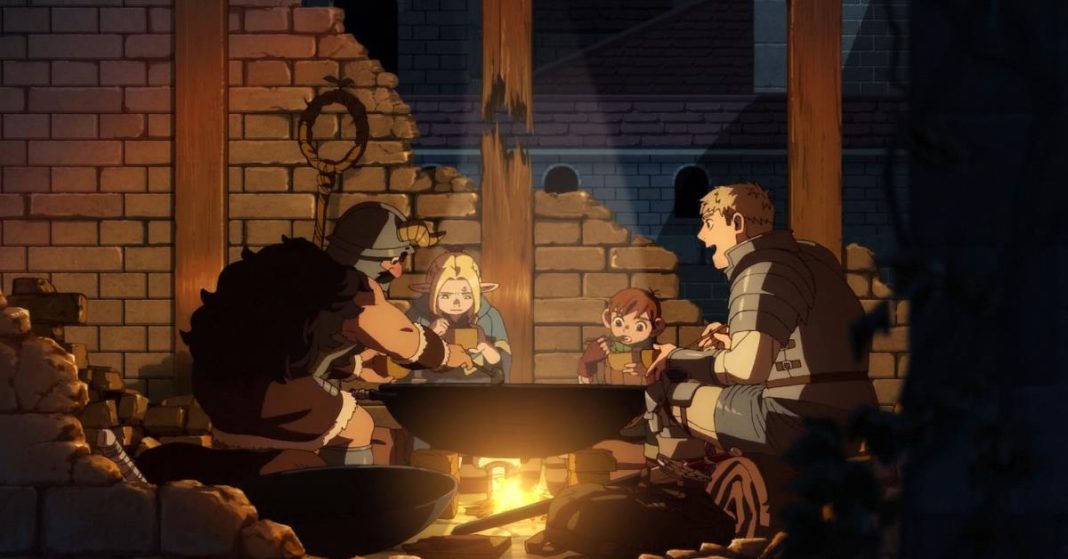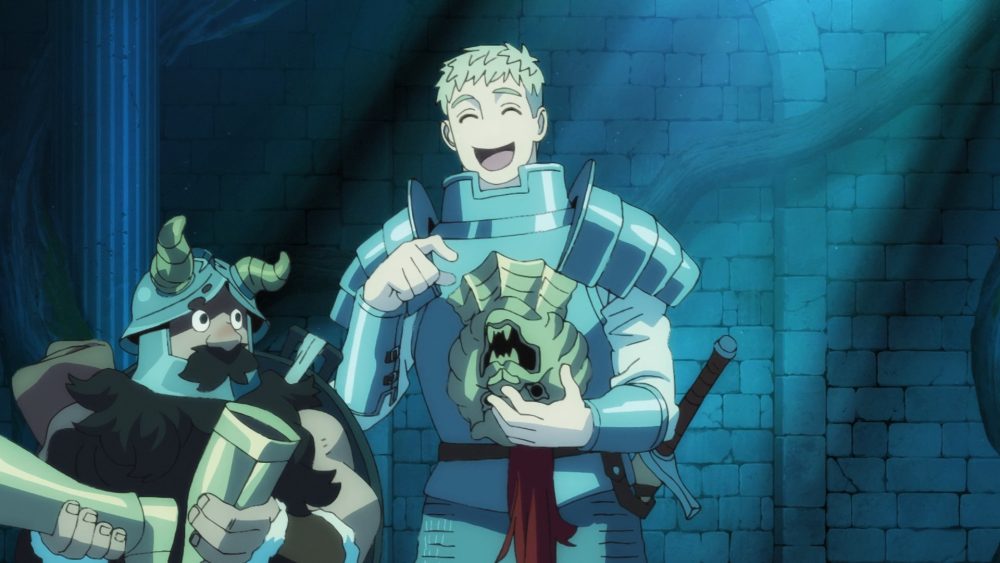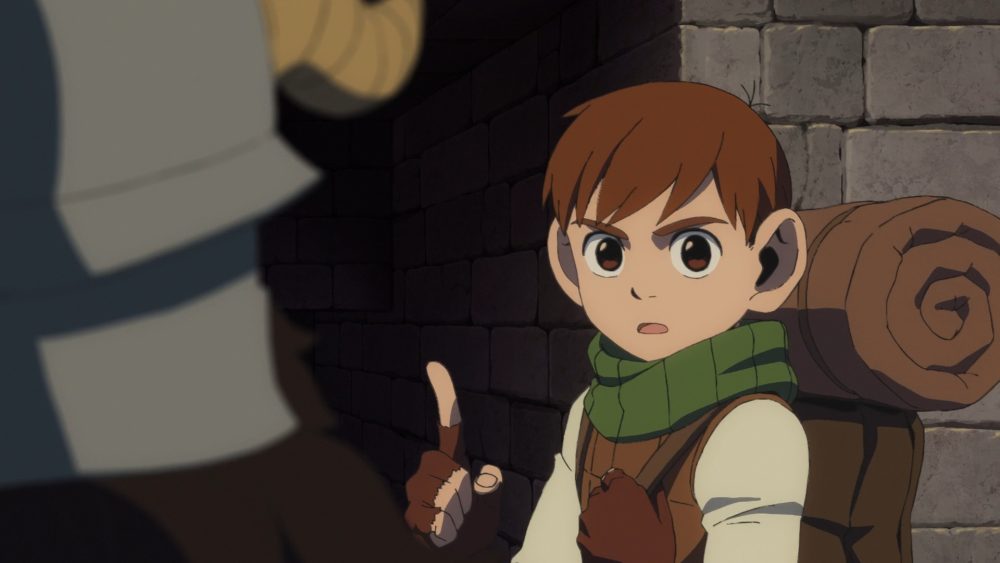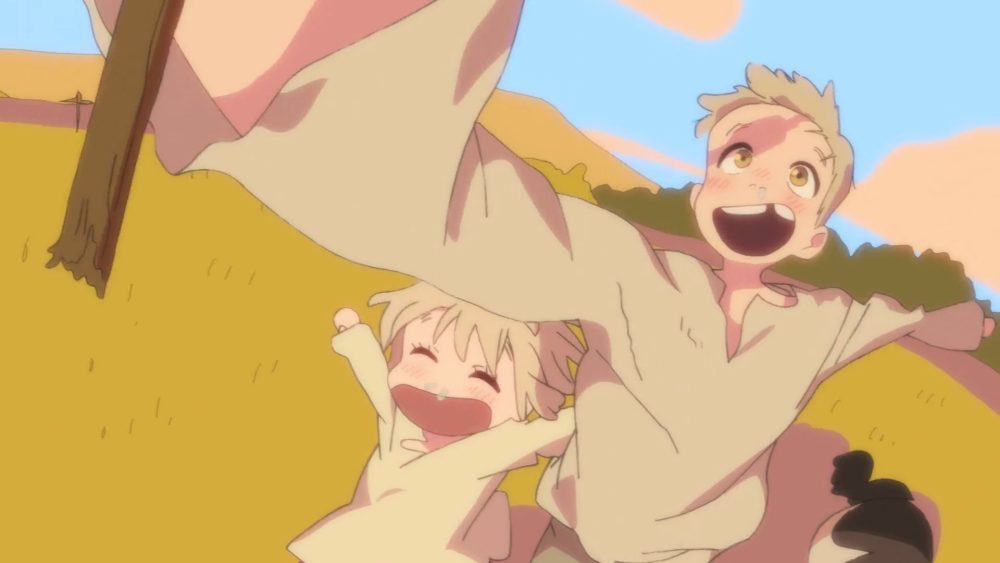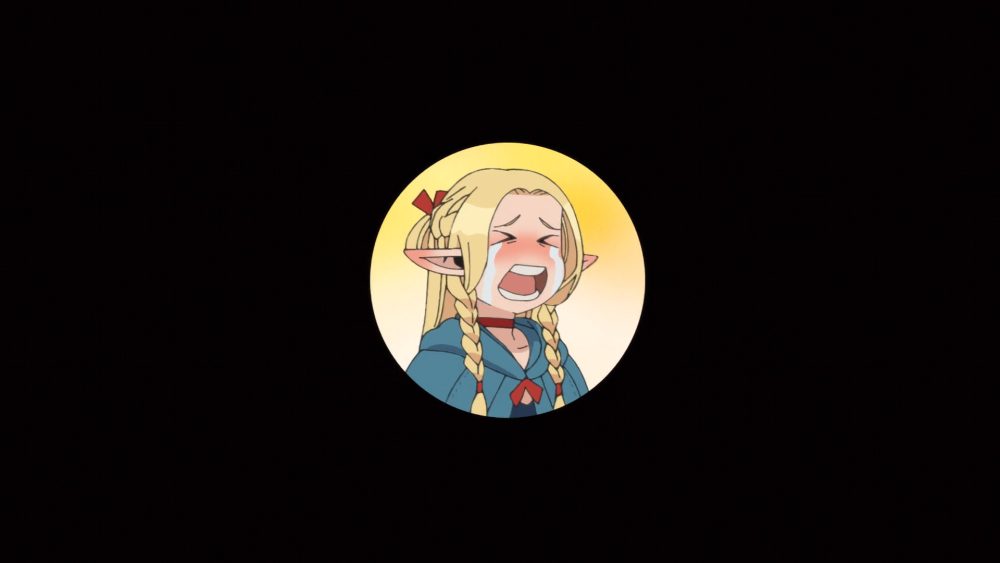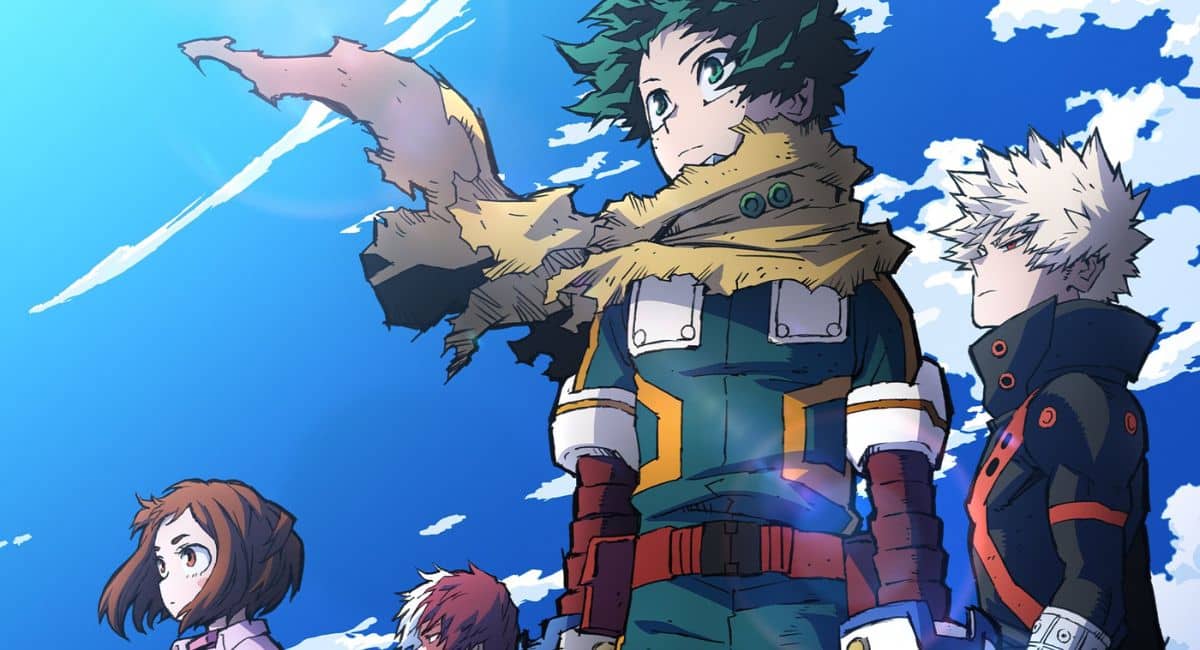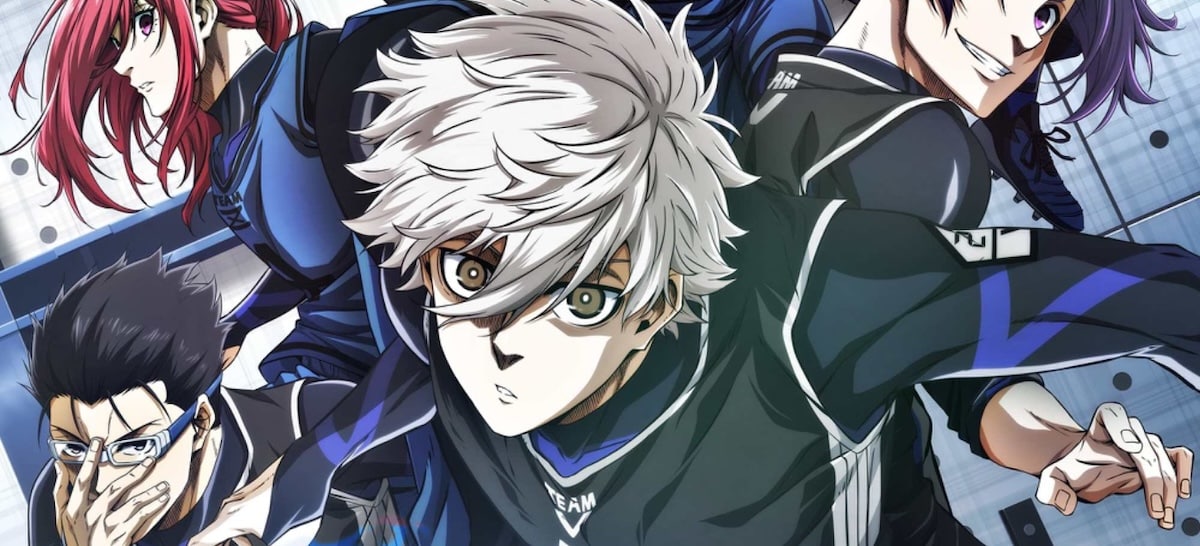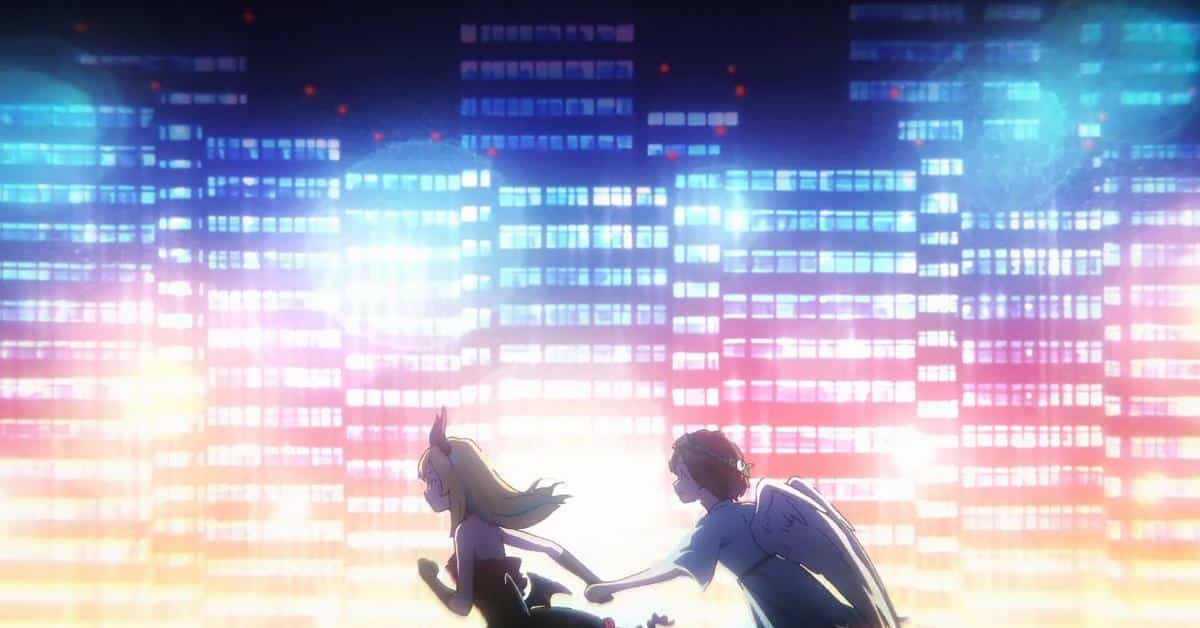The Delicious in Dungeon anime has a high concept to die for. Fantasy adventurers Laios, Chilchuck, and Marcille must rescue their friend Falin from the belly of a dragon, but unfortunately, they can’t afford the cost of food. Thus, the dwarf cook Senshi says that the only way to survive is to cook and eat the monsters they find along the way. So, the four adventurers embark on a culinary journey through the local dungeon. Giant scorpion hot pot, basilisk egg omelet, and man-eating plant tart are all on the menu—even the likes of living armor stand no chance.
The characters are appealing from the start. An early stand-out is Marcille, an elven wizard who hates the idea of eating monsters, and reactions to eating man-eating plants (isn’t that just cannibalism?!) and walking mushrooms (why the feet?) that are priceless. The real treasure, though, is Laios, whose monster hyper-fixation sets him apart from the “noble knight” he resembles on the surface. His curiosity occasionally gets his friends into trouble, but it’s also their greatest asset against the dungeon’s monsters.
Delicious in Dungeon‘s special sauce is Ryoko Kui
Delicious in Dungeon’s secret sauce is its creator, the manga artist Ryoko Kui, who can draw anything from demons to spaceships to high fashion. Kui chose to draw the ferocious monsters and elaborate meals of Delicious in Dungeon because she loves those things as much as Laios does. Kui is just as adept at battle scenes, expressive characters, and stark horror imagery. To read Delicious in Dungeon is to be served a deceptively spicy full-course meal by a polymath who has locked the door behind you and will not open it until she finishes regaling you with her recent 200-hour playthrough of Baldur’s Gate 1 and 2.
However, Delicious in Dungeon is no longer just a great manga. Now, it’s also a high-profile Netflix anime series. Going into the first episode, I wondered how the anime creators would interpret Kui’s story: What elements would they emphasize? What would they leave out? If they intend to cover the whole manga, how might they abridge or embellish a series spanning 14 volumes?
A faithfully brisk adaptation
So far, the answer is it’s a faithful but brisk adaptation of the original work. The first two episodes of Delicious in Dungeon rocket through five chapters of material in just over 40 minutes. It’s not quite as swift as Heavenly Delusion‘s adaptation last year, but it’s not far off either. As a fan of the manga, I never felt that important scenes were cut from the adaptation. The jokes still land. The Looney Tunes-style zoom into Marcille’s howling face (I’m tired of eating monsters!”) is just like I imagined when I read the scene in the manga.
Plus, the pacing seems to appeal to fans of the manga and new viewers alike. My friends who are anime-only viewers have also told me they’re happy with the pacing so far.
Even so, I can’t help but wish the monsters in each story were given an episode of their own so that they could shine that much brighter. Because Delicious in Dungeon is a story that shares Laios’s all-consuming love of monsters, they all deserve at least 24 minutes. While I understand why the monsters might need to share the spotlight since there’s only so much screen time and why the creators might not want to cut certain chapters of the story so as not to aggravate fans of the comic, I might prefer cutting future chapters if it means giving the remainder of the story room to breathe.
A great example is the third episode, “Living Armor,” which is the best of the series so far. Adapting a two-part story, the episode develops just one monster fully. Thus, I don’t think it’s coincidental that “Living Armor” also has the most confident direction and animation. A meatier story allows the staff to dig in and build their own vision for the series. There are later chapters I’d love to see receive this treatment, but I’ll reserve my judgment for now until they appear on screen.
The creative team behind the Delicious in Dungeon anime
The Delicious in Dungeon anime is produced by Studio Trigger, best known for big bombastic anime productions by directors Hiroyuki Imiashi (Promare) and Yoh Yoshinari (Little Witch Academia.) However, some of their best recent work has been the product of their younger staff. For example, 2018’s SSSS.Gridman and its 2021 successor SSSS.Dynazenon, which brought anime fans the full flowering of director Akira Amemiya, animator Kai Ikarashi, and assistant director Yoshihiro Miyajima. For the latter, Delicious in Dungeon is his long-awaited debut as a series director.
Miyajima’s crew includes many other folks Trigger fans might recognize. Scriptwriter Kimiko Ueno helped on past studio projects like Brand New Animal and the Little Witch Academia TV series. The aforementioned Ikarashi handles a few key scenes, like an early sequence that reimagines the manga’s opening. Meanwhile, the third episode was storyboarded by Ichigo Kanno, an animator who came into his own working on Dynazenon. While I imagine folks are chomping at the bit to see Ikarashi, the studio’s resident genius, tackle a whole episode himself, I’m happy to see first-time storyboarders like Kanno prove they’re just as capable of delivering banger episodes.
Also notable is the show’s composer, Yasunori Mitsuda. Yes, I’m not joking: Mitsuda, the legendary games composer responsible for scoring Xenogears and Chrono Cross, is on board. He’s been credited on many past anime series without much fanfare. Even so, he’s a perfect match for a series like Delicious in Dungeon that so clearly reveres classic RPGs. The choice reflects an adaptation that is doing its best to meet the source material where it’s at.
As a Delicious in Dungeon and Studio Trigger fan, I’m not surprised to enjoy this adaptation, first, as an opportunity to see others discover this story I love, and second, as another chance (I hope) for Trigger to grow beyond the shadow cast by its founders. So far, I’ve been rewarded on both counts. Still, I’d love to see the Delicious in Dungeon adaptation develop beyond a simple adaptation into a fulfilling stand-alone work. The third episode succeeds with flying colors. The first two, though entertaining, are quite conservative by comparison.
Anime glass ceiling still keeps women out of the director’s chair
I should also note that the Delicious in Dungeon anime represents another example of a comic series drawn by a woman assigned to a male director. I’m a fan of both Kui and Miyajima, and many women are working on the anime adaptation in other positions. But as somebody who’s written an article about this subject in the past, I thought I should mention it here. The anime industry remains far more conservative than the manga industry in this respect despite its range of past and present talent.
Verdict: If you’ve never read the Delicious in Dungeon manga, I’d say the anime is a fine place to start. Feel free to tear through the manga and join us slavering for weekly meals if you like what you see. If you’ve already read the whole thing, though, or if you’re a Trigger skeptic, you might want to wait for more episodes along the lines of the third. Personally, I’m excited to see what other artists along the lines of Ikarashi and Kanno make their debut with this production. With luck, a banquet of delicious cuisine lies before us.
New episodes of Delicious in Dungeon stream weekly on Netflix every Thursday.


